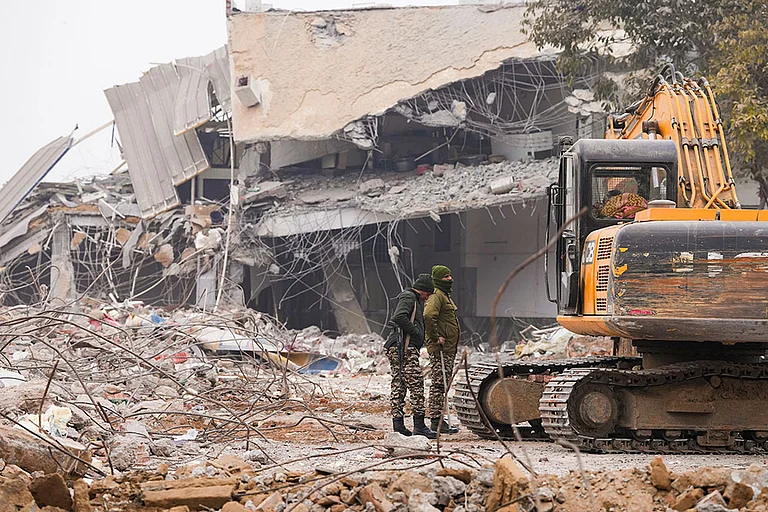The Kathmandu quake has scared the wits out of most people living in north India, but experts say this was a baby earthquake compared to what may be expected in the near future. A bigger quake, a giant killer that packs in 40-50 times more energy than the 7.9 Richter temblor that shook Nepal and India is waiting to happen anywhere in the wide, sweeping arc of the Himalayas and its subsystems, from Kashmir to Arunachal Pradesh. The most susceptible is the central zone south of Kathmandu in India where a ‘great earthquake’ has not occurred in the last 700 years. Harsh Gupta, one of India’s foremost seismologists and former secretary in the ministry of earth sciences, says, “A big one, much, much bigger than the Kathmandu quake, is long overdue.” Unfortunately, science has not progressed far enough to precisely forecast earthquakes in advance.
In an earlier write-up in Outlook (Oct 3, 2011) titled Earthquake: Waiting for the Gargantuan, this writer had used these (justifiably ominous) words: “A time-bomb is ticking and it was not a question of if, but when”. The big one of 8+ Richter magnitude will strike northern India because a great quake in the Himalayan region could occur any time—a kind of prophetic warning that unfortunately no one seems to heed as we continue to build with impunity, little realising the stiff penalties an earthquake extracts. Experts say the Kathmandu quake has still not defused that time-bomb, which continues to tick as most of the Himalayan region is reeling under an immense stress right below our feet as the Indian plate slowly inches under the Eurasian plate at five centimetres annually.
A giant continental embrace that locks India, China, Nepal and Pakistan makes them highly vulnerable to earthquakes (see graphic). This geological ‘jhappi’ began 71 million years ago when the Indian plate detached itself from Africa and travelled ever so slowly to come and hit the Asian plate. Since then, this continental pushing and shoving makes the Himalayas grow by 5 mm every year. The force of the Kathmandu quake was large enough to move the entire township of Kathmandu by half a metre, confirms Roger Bilham, a well-known British seismologist. Bilham adds that “the current earthquake released 180 years of cumulative slip on a patch near or overlapping a rupture that destroyed Kathmandu in 1833”.
Giant natural calamities, it seems, also bring out the best in ‘disaster diplomacy’ from India. The 2004 tsunami saw India sending shiploads of aid to Sri Lanka, Indonesia and Maldives on the same day the disaster struck, well before global headmaster US even figured out whether a tsunami is spelt with a ‘t’ or an ‘s’. It opened the eyes of the world to the fact that India has a presence in the seas south of the Andamans, a busy sea lane for oil tankers. One consequence was the initiation of the Indo-US civilian nuclear deal as a major bid for partnership by the Americans. The Nepal disaster saw Prime Minister Modi initiating ‘Operation Maitri’. This current healing balm for Nepal was provided swiftly admittedly as a possible counter to the growing influence of China. One will have to wait for the outcome, which probably can only be positive for India, since the man spearheading negotiations for both the nuclear deal and ‘Operation Maitri’ is the same genial diplomat S. Jaishankar.
Disaster diplomacy aside, the prognosis for India is not good—for when the “really big one” strikes, the country will probably be ill-prepared, and estimates by the National Disaster Management Authority indicate that up to a million lives could be lost if a gargantuan temblor strikes in the vicinity of any of our northern cities. The big one is waiting to happen; we just don’t know where and when.
(Pallava Bagla is science editor of NDTV)
























